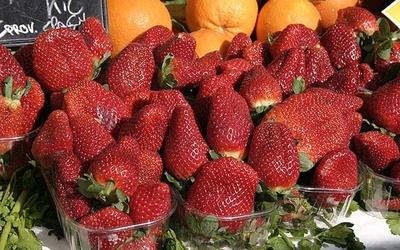Nikkei Heritage

This series republishes selected articles from Nikkei Heritage, the quarterly journal of the National Japanese American Historical Society in San Francisco, CA. The issues provide timely analysis and insight into the many facets of the Japanese American experience. NJAHS has been a Discover Nikkei Participating Organization since December 2004.
Visit the National Japanese American Historical Society Web site >>
Stories from this series
A Look at the Emigration of Identity from Japan to America
Oct. 26, 2016 • Ben Hamamoto
When we talk about the state of the Japanese American community today, one of the most common remarks is how incredibly diverse we are. Nikkei Americans have high-rates of out-marriage to white Americans and other Asian Americans. While this is legitimately new and different from the Japanese America of decades past, the community was never as homogenous as its reputation suggests. In actuality, the Issei brought diverse identities with them from Japan – in particular, centered around the prefecture they …
The Evolving Japanese American Identity - Part 2
Oct. 19, 2016 • Jane H. Yamashiro
Read Part 1 >> Connected to Japanese Society and Culture Many Shin-Nisei (children of post war Japanese immigrants) on the U.S. continent do not identify with being Japanese American because to them it suggests a history of incarceration and cultural distance from Japan. For those whose parents came from Japan after World War II, their family history of the war was from the Japan side, not the U.S. side. Rather than experiencing incarceration, close relatives may have experienced the atomic …
The Evolving Japanese American Identity - Part 1
Oct. 18, 2016 • Jane H. Yamashiro
Slideshow above: The few remaining urban enclaves of Japanese American culture and identity. Have you ever thought about what it means to identify as Japanese American? Why do some people use the term ”Nikkei American” instead of “Japanese American”? Over the past 60 years, Nikkei American demographics have been changing significantly. These changes include low immigration rates from Japan (leading to a decreasing Nikkei American population relative to the rest of the Asian American population), an aging population, an increase …
Oshogatsu - A Japanese Tradition in America
Jan. 3, 2012 • Tamio Spiegel
When I met Julie, we shared a desire to keep our house open to our friends and community as much as possible. 1984 was our first oshogatsu as a couple. Her family did nishime. I had never heard of it before. I couldn’t imagine New Year’s without ozoni. Julie was obsessed with kuromame and chestnuts in a sweet sauce. What about those bowtie seaweed things? No self-respecting Japanese-American celebration is complete without cha siu, Chinese roast pork. We could do …
Something Mixed, Chanpuru and Other Okinawan Delights
July 20, 2011 • Margaret Bacon
In 2001 a team of internationally renowned experts released The Okinawa Program, How The World’s Longest-Lived People Achieve Everlasting Health – And How You Can Too. The book, based on a 25-year study, was quickly snatched up as the new fountain of youth (or at least key to longevity) only to be realized as yet another common sense approach to healthy eating and living. Okinawa might be a tropical island, but it’s hardly considered glamorous. The traditional Okinawan diet consists …
Taste Buds Memory of a Childhood on a JA Strawberry Farm
June 22, 2011 • Chizu Omori
I don’t quite know what to make of the notion of Japanese American food. What I can talk about is what I ate as a child and as an adult, and how my diet and tastes have changed and how I still eat plenty of foods that I ate as a child. I grew up on farms in Southern California during the pre World War II days. My mother was a Kibei-Nisei, which is to say that she was born …










































